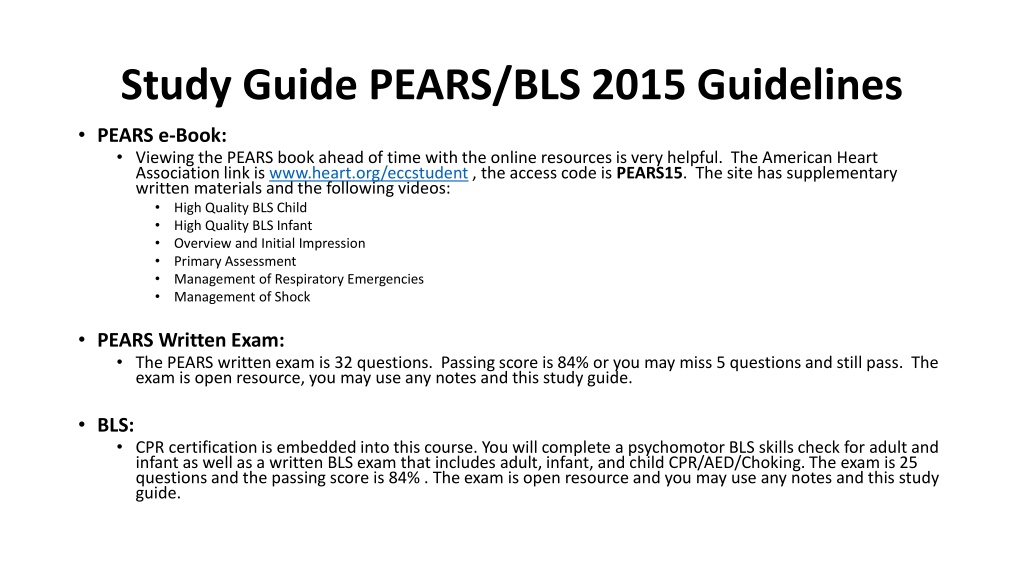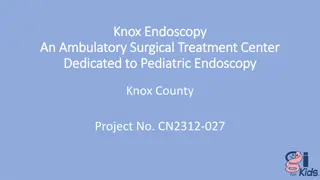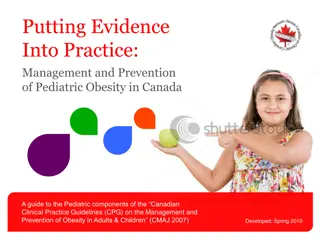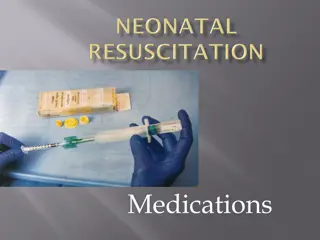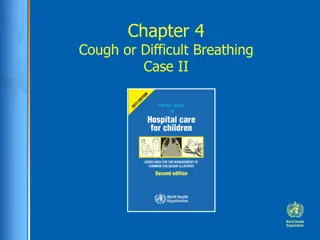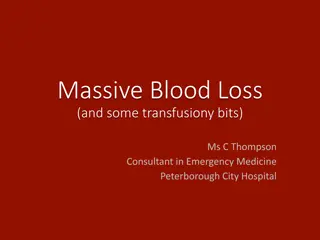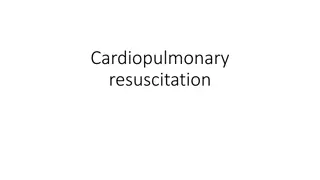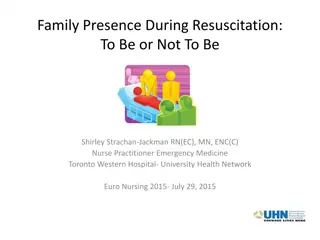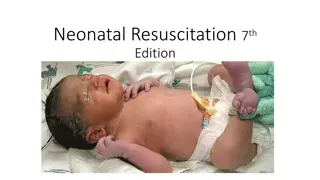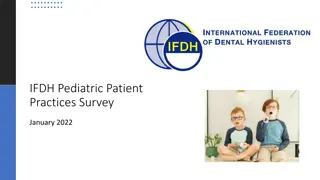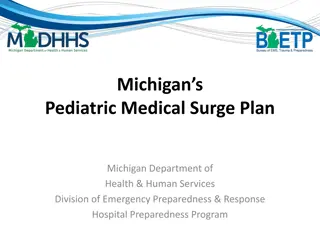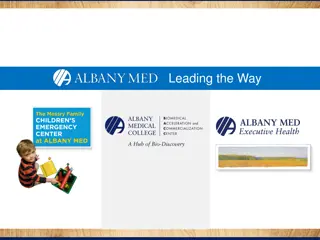Pediatric Emergency Assessment and Resuscitation Study Guide
Study Guide for PEARS/BLS 2015 Guidelines covers key topics such as initial assessment, pediatric respiratory emergencies, shock management, and CPR certification. Access online resources and videos for better preparation. Learn about PEARS systematic approach algorithm, hypotensive shock criteria, pediatric CPR overview, and more to enhance your knowledge and skills for pediatric emergency care.
Download Presentation

Please find below an Image/Link to download the presentation.
The content on the website is provided AS IS for your information and personal use only. It may not be sold, licensed, or shared on other websites without obtaining consent from the author. Download presentation by click this link. If you encounter any issues during the download, it is possible that the publisher has removed the file from their server.
E N D
Presentation Transcript
Study Guide PEARS/BLS 2015 Guidelines PEARS e-Book: Viewing the PEARS book ahead of time with the online resources is very helpful. The American Heart Association link is www.heart.org/eccstudent , the access code is PEARS15. The site has supplementary written materials and the following videos: High Quality BLS Child High Quality BLS Infant Overview and Initial Impression Primary Assessment Management of Respiratory Emergencies Management of Shock PEARS Written Exam: The PEARS written exam is 32 questions. Passing score is 84% or you may miss 5 questions and still pass. The exam is open resource, you may use any notes and this study guide. BLS: CPR certification is embedded into this course. You will complete a psychomotor BLS skills check for adult and infant as well as a written BLS exam that includes adult, infant, and child CPR/AED/Choking. The exam is 25 questions and the passing score is 84% . The exam is open resource and you may use any notes and this study guide.
Preparing for the Course Preparing for the Course Please be familiar with the following key topics in the PEARS resources attached: PEARS Systematic Approach Algorithm INITIAL ASSESSMENT/IMPRESSION (From the doorway look) A = Appearance B = Breathing C = Circulation (color) PRIMARY ASSESSMENT Airway Breathing Circulation Disability Exposure Pediatric Management of Respiratory Emergencies Flowsheet Upper airway obstruction Severity: Mild or Severe Lower airway obstruction Lung tissue disease Disordered control of breathing Pediatric Management of Shock Flowsheet Hypovolemic shock Severity: Compensated or Hypotensive Distributive shock: Anaphylaxis and Sepsis
Hypotensive Shock: Term neonates: Systolic <60 <1 yr.: Systolic <70 1-10 yr.: Systolic less than (Age x2) +70 > 10 yr.: Systolic <90 Fluid Bolus (Isotonic) Lungs Clear = 20ml/kg over 5 minutes via push/pull
Pediatric CPR BLS Overview - CAB Push Hard and Fast-Repeat every 2 minutes *If person unresponsive next step is to check breathing and pulse. Pulse check no more than 5-10 seconds. Anytime there is no pulse or unsure - COMPRESSIONS Elements of good CPR Compressions Rate-at least 100 - 120 Compression depth 1.5 inches (infants), 2 inches (children) Switch compressors every 2 min or 5 cycles Complete Recoil Minimize interruptions (less 10 secs) *Ventilation Pulse but not breathing, or not normal breathing: squeeze the bag once every 3 to 5 seconds Compression:Ventilation ratio during CPR Single rescuer 30:2 2 rescuers 15:2 Excessive ventilation decreases cardiac output Fatal mistake to interrupt compressions.
